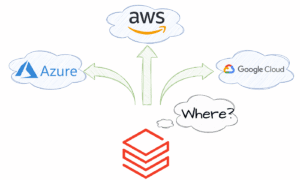The integration of SAP Enterprise Resource Planning (ERP) with cloud technology is reshaping the educational landscape, enhancing both operational efficiency and digital learning experiences. Shamshuddin Shaik, an expert in educational cloud transformation, explores how SAP on AWS is driving innovation in education by providing scalability, cost optimization, and security. With cloud-based automation and data-driven decision-making, educational institutions are achieving a more agile and personalized learning environment.
The Impact of Cloud-Based SAP Infrastructure
Cloud computing has revolutionized IT infrastructure in education, providing institutions with greater flexibility and reliability. SAP on AWS enables seamless scalability, allowing educational organizations to manage resources efficiently, particularly during peak academic periods such as course enrollments and examinations. The pay-as-you-go cloud model ensures cost optimization by eliminating the need for heavy upfront investments in physical infrastructure, enabling institutions to allocate more resources toward research and advanced learning technologies.
Automation and Efficiency in Educational Administration
Educational institutions face increasing pressure to streamline administrative tasks and improve efficiency. SAP on AWS facilitates automation in crucial areas such as student enrollment, course management, and financial aid processing. Machine learning algorithms integrated into SAP systems optimize workflows by reducing manual intervention, improving accuracy, and enhancing the overall management of institutional operations. This automation not only saves time but also allows administrators to focus on strategic initiatives that improve the learning experience.
Enhancing Security and Compliance in Cloud-Based Education
With the rise of digital learning, protecting sensitive student and faculty data has become a top priority. SAP on AWS provides robust security measures, including encryption, role-based access controls, and continuous monitoring. These measures ensure compliance with educational data protection regulations while minimizing risks associated with cyber threats. Educational institutions can implement security best practices, such as multi-factor authentication and real-time anomaly detection, to further safeguard their cloud-based systems.
Personalized Learning with AI-Driven Insights
Artificial intelligence is playing a pivotal role in transforming education through personalized learning experiences. SAP-powered AI solutions analyze student data to provide tailored learning pathways, adapting course materials to individual progress and preferences. These intelligent systems assist educators in identifying students who need additional support, ensuring a more effective and engaging learning environment. Predictive analytics further enhances educational planning by identifying trends in student performance and optimizing curriculum development.
IoT Integration for Real-Time Learning Analytics
The integration of the Internet of Things (IoT) with SAP on AWS enables real-time data collection from connected devices in classrooms and learning environments. IoT sensors track student engagement, attendance, and performance metrics, providing educators with valuable insights. This technology helps institutions refine teaching methods, improve student retention, and enhance digital learning strategies. Additionally, IoT-enabled smart campuses optimize resource usage by monitoring energy consumption, classroom occupancy, and facility maintenance needs.
Optimizing Learning Experiences Through Cloud Accessibility
Cloud-hosted SAP solutions provide seamless access to learning resources from anywhere, making education more inclusive and flexible. Students and faculty can collaborate in real time, access research materials on demand, and engage in interactive virtual classrooms. High-performance cloud computing ensures smooth operation of digital learning platforms, supporting online assessments, remote instruction, and AI-powered tutoring systems. This level of accessibility is particularly beneficial for distance education programs and global learning initiatives.
Future Trends in Educational Cloud Technology
The future of education will continue to be shaped by advancements in cloud computing, artificial intelligence, and blockchain technology. Blockchain-based credentialing systems will provide secure and verifiable academic records, reducing fraud and streamlining the certification process. AI-driven chatbots and virtual assistants will further enhance administrative support, assisting students with course selection, academic advising, and personalized study plans. As educational institutions increasingly adopt cloud-based ERP solutions, the focus will be on continuous innovation and data-driven decision-making.
In conclusion, the integration of SAP on AWS is revolutionizing educational institutions, enabling them to optimize operations, enhance security, and personalize learning experiences. By leveraging cloud-based automation, AI-driven analytics, and IoT integration, institutions can create a more efficient and adaptive learning environment. Shamshuddin Shaik’s insights highlight the transformative role of cloud computing in education, ensuring that schools and universities remain at the forefront of digital innovation while maintaining security and scalability in an evolving academic landscape.



































